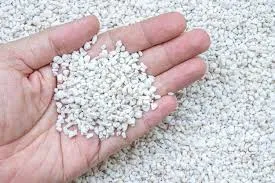Oct . 04, 2024 22:37 Back to list
Enhanced Resistance to Oxidation for Improved Material Durability and Performance
Understanding Oxidation Resistance in Materials
Understanding Oxidation Resistance in Materials
One of the most common materials known for its oxidation resistance is stainless steel. The addition of chromium to steel significantly enhances its ability to form a protective oxide layer on its surface. This passive layer prevents further oxidation and corrosion, extending the material's lifespan and maintaining its structural integrity. Other alloys and metals, such as titanium and certain nickel-based superalloys, also demonstrate exceptional oxidation resistance, making them ideal for high-temperature applications, such as gas turbine engines.
oxidation resistant

The oxidation process usually accelerates with increased temperature and exposure to aggressive environments. Therefore, understanding the conditions under which materials operate is crucial for selecting the right type of metal or alloy. For example, in aerospace applications, components are often exposed to extreme heat and oxygen-rich atmospheres, making oxidation resistance a key factor in design and material selection.
Innovative coatings, such as ceramic or thermal barrier coatings, are also employed to enhance the oxidation resistance of existing materials. These coatings can act as a barrier, protecting the underlying substrate from exposure to oxidizing agents. Research continues in the development of new materials and coatings that can withstand not only oxidation but also high-stress environments, further broadening the applications and enhancing the performance of engines, turbines, and other critical components.
In summary, oxidation resistance is a vital characteristic for materials used in demanding applications. The choice of materials, taking into account their ability to resist oxidation, plays a crucial role in ensuring the durability and reliability of components. Ongoing advancements in materials science promise to yield even more resilient options that meet the challenges of modern engineering.
-
High-Quality Fe-C Alloy Leading Manufacturers & Spherical Alloy Materials Supplier
NewsJun.10,2025
-
Premium Low Nitrogen Recarburiser Supplier & Manufacturer – High Quality Exporters
NewsJun.10,2025
-
DT4 High-Quality Magnetic Materials Leading DT4 Manufacturer & Supplier
NewsJun.10,2025
-
High-Performance Spring Steel Suppliers Custom Solutions
NewsJun.10,2025
-
Premium SWRCH6A Manufacturer Steel Wire Supplier & Factory
NewsJun.10,2025
-
Premium Mild Steel Wire Rod Supplier & Manufacturer
NewsJun.10,2025
